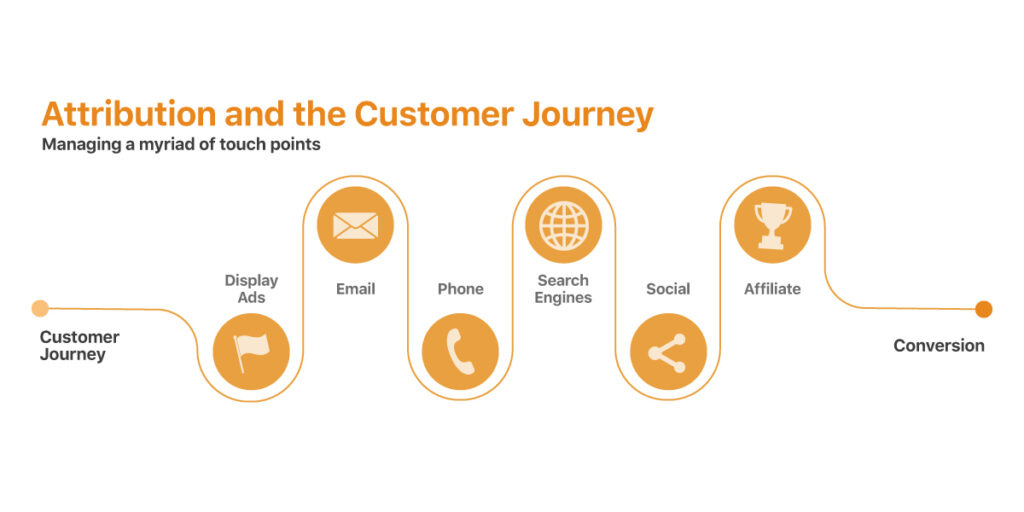Beyond the Click: Rethinking Attribution Models in B2B Marketing
In B2B marketing, attribution isn’t just about assigning credit—it’s about making better decisions. Yet too many teams still treat it like a binary toggle: first-touch or last-touch?
That’s not just outdated. It’s limiting.
Today’s buying journeys are long, non-linear, and cross a dozen touchpoints before sales even sees a lead. Attribution models that ignore that complexity risk over-funding shallow channels and underestimating what’s actually moving the pipeline.
Currently my team adopted a 40/40/20 model—crediting 40% to the first touch, 40% to the last, and 20% to meaningful middle interactions. It’s not perfect, but it’s directionally smarter than one-dimensional models.
And we’re not alone. Some of the sharpest marketing orgs in B2B are rethinking attribution at a foundational level. So to give some insight to this article, here is what my research tells me about the best B2B brands and what they do.
1. HubSpot: W-Shaped Attribution for Full-Funnel Insight
HubSpot uses a W-shaped model to give equal credit to:
First touch (typically content or organic)
Lead conversion point (e.g., demo request or form fill)
Opportunity creation (often a sales interaction or high-intent download)
Everything else gets shared across the middle. Why? Because in their data, these three moments consistently aligned with major buyer behavior shifts. It’s ideal for teams tracking both marketing impact and momentum.
2. Salesforce: Custom Multi-Touch Modeling with Pardot + Tableau
Salesforce marketing ops runs attribution through a mix of Pardot engagement data and Tableau dashboards. Their model uses weighted scoring based on:
Lead source trust
Funnel velocity impact
Revenue influence (not just form fills)
What sets Salesforce apart is their integration of deal stage progression into attribution. It’s not just about leads—it’s about which touches accelerate sales.
3. Gong: Behavioral Attribution with Revenue Intelligence
Gong thinks differently (I keep talking about them, but they are doing some funky things as the new kid on the block). They don’t just attribute based on forms or email clicks—they look at meeting behaviors, call insights, and content engagement within deals.
For example: If a prospect stays on a webinar for 45+ minutes, Gong attributes higher value than a click-through. Their model is behavioral, not just channel-based—and it’s redefining how marketers measure influence across the sales cycle.
4. Metadata.io: Self-Reported Attribution + Platform Models
One of the most progressive moves? Metadata.io collects self-reported attribution on demo forms (“How did you hear about us?”), then cross-references that with their platform data.
Why? Because what your CRM sees isn’t always the first real touch. Podcasts, Slack mentions, LinkedIn posts—most of it goes untracked. Self-reported insight closes that blind spot and brings qualitative signal into quantitative systems.
Why the 40/40/20 Model Still Holds Up (With a Caveat)
I believe our 40/40/20 model is smart, and not because I say so, but bassed on years of experience. Here’s why:
First touch captures discoverability and TOFU campaign value.
Last touch captures urgency and decision momentum.
Middle bridges the rest—emails, retargeting, nurturing, etc.
It respects multi-channel journeys while staying simple enough for leadership reporting. But here’s the catch: it assumes equal weight across buyers and industries. That’s not always reality.
For example:
In enterprise sales, first touches (like ABM or partner content) might matter more.
In PLG, last touches often dominate due to rapid cycles and bottom-up growth.
For high-risk compliance buyers? Middle education (webinars, legal content) could be your closer.
Where Attribution Is Heading
The future of attribution is contextual, dynamic, and human-informed. Here’s where it’s going:
Hybrid Attribution Models: Static weights are giving way to adaptive scoring models, where attribution changes based on ICP segment, deal size, or product line. Tools like Bizible, Dreamdata, and HockeyStack are leading here.
AI-Powered Pattern Detection: AI is starting to predict influence patterns, not just track events. If a sequence of content > webinar > sales call reliably leads to higher close rates, AI will prioritize that pattern—regardless of position in the journey.
Intent-Layered Attribution: Adding Bombora or Demandbase data to see who was in-market when they touched your brand helps filter vanity engagement from real signals. Attribution gets tighter—and more useful.
Attribution + ROI + CAC: The smartest teams are linking attribution directly to cost of acquisition and customer lifetime value—not just leads or pipeline. That closes the loop and aligns marketing closer to revenue.
How to Improve Your Attribution Now
Overlay behavior, not just clicks Time-on-page, scroll depth, webinar duration—these are real signals of buyer intent.
Bring in self-reported data Add a simple “How did you hear about us?” field. You’ll be shocked how often it contradicts your systems.
Run attribution by segment Slice models by industry, region, and deal size. You might need a 70/30 model for enterprise, and a last-touch model for SMB.
Map content to buying stages Instead of channel-based attribution, consider what kind of content drove engagement. Was it early education or late-stage proof?
Use attribution to fuel investment decisions—not just reports Attribution should drive budget reallocations, not just monthly updates. If webinars are converting but underfunded, shift dollars. If paid search is expensive and not converting past MQL, cut it.
Now here are my final thoughts. Your Attribution is a strategy, not a report. What I mean is great attribution is about understanding how trust is built. The 40/40/20 model is a strong foundation—but the future is smarter, more contextual, and tied to real business outcomes.
Don’t get stuck choosing between first-touch and last-touch. Instead, ask:
“Which combination of moments actually moved this deal forward?”
And more importantly: “How do we scale that pattern?”
Want some more insight - follow me on Substack here











